|
Regrettably, some construction projects end in long and acrimonious disputes between the employer and contractor, or between the main contractor and subcontractors. These disputes appear to occur more often these days. Frequently the only real winners from these disputes seem to be lawyers.
"Submitting a variation claim (change order request) is not a dispute. A dispute arises when the contractor and the employer cannot agree that the variation claim (change order) is legitimate, or they cannot agree the quantum of the claim." Disputes also arise when one party does not fulfil their obligations in terms of the contract despite repeated requests from the other party to comply. For example; the employer does not pay the contractor, or the contractor fails to rectify faulty work which is due to their fault. Although disputes are often characterized by a formal dispute resolution process, many disputes simply result in a breakdown in communication between the parties, threats, unhappiness, and a prolonged social media and mainstream media slanging match, which can lead to damaged reputations and be a distraction. Many disputes are left unresolved and fester on, while sometimes the slanging match leads to a further dispute, or legal action. Examples of disputes gone wrong: https://floridapolitics.com/archives/316849-downtown-st-petersburgs-bliss-condo-owners-sue-developers-over-shoddy-construction https://therealdeal.com/miami/2020/08/03/codina-partners-affiliate-allegedly-owes-3-6m-for-downtown-doral-condo-construction-lawsuit/ https://www.chicagolawbulletin.com/nixon-peabody-get-3-6-million-attorney-fees-20200602 Is it possible to resolve variation claims amicably without declaring a dispute?
Reasons for construction disputes
In the next article we will discuss why construction disputes are bad for the parties, and how to avoid construction disputes. How to avoid construction disputes Other useful reading: Don’t start construction projects without a proper contract Is Your Construction Correspondence Losing You Variation Claims or Projects? When Contractors Can’t Claim a Delay From Their Client on Construction Projects 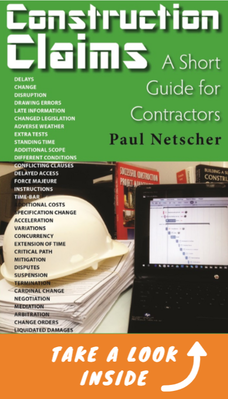 This article is from the webinar Avoiding Construction Disputes by the author and information included in author's book Construction Claims: A Short Guide for Contractors. This easy to read book demystifies the claims (change order) processes ensuring entitlements are claimed. Learn when you can claim, how to make claims compelling, and the supporting documentation required to win. Your eyes will be opened to numerous events, costs and impacts. Knowing some of these tips could dramatically improve profits and avoid time consuming acrimonious disputes. Also included is advice for contractors to avoid and defend claims from employers and subcontractors. © 2021 This article is not to be reproduced for commercial purposes without written permission from the author. Do you want to learn how to manage construction projects successfullyPaul Netscher has written several easy to read books for owners, contractors, construction managers, construction supervisors and foremen. They cover all aspects of construction management and are filled with tips and insights.
Visit to read more. The books are available in paper and ebook from most online stores including Amazon.
2 Comments
From time to time construction projects are delayed by events outside the control of the contractor and due to no fault of the contractor. Also, on some projects there are scope increases which may require extra time to complete. Contractors need to submit a delay claim (change order) requesting an extension to the milestone completion dates. This extension is necessary to avoid penalties or damages being imposed by the client. In addition the contractor can usually request to be reimbursed for the costs associated with the additional time. Most contractors believe that using the approved Construction Schedule (Programme), with linked tasks and a Critical Path, they can simply input the delays and automatically get a new end date. Essentially this is true, but it doesn’t take into account some factors which could impact the new revised Construction Schedule. What to consider when your construction project is delayed1. The revised Construction Schedule may push certain activities into unsuitable weather seasons. For example 1: the contractor may have planned to complete the excavations and earthworks in the dry season, but because of delays these activities are now pushed into the wet season. In some areas it can be impossible to carry out earthworks in the wet season, but at the very least the rains will cause additional delays which weren’t allowed in the original Construction Schedule. Example 2: the original Schedule was prepared on the premise that the building being constructed would be weather tight by the time severe cold or rains arrived. Delays to construction could result in the building not being weather-tight before the onset of poor weather resulting in weather related delays which weren’t allowed in the Construction Schedule. 2. The revised Construction Schedule can cause underutilisation of construction resources and equipment, such as large cranes which may have to be re-established again on the project, or could be under-utilised for a period. 3. The revised Schedule may have resource peaks and troughs. This might result in resources (men and equipment) having to be removed and re-established on the construction project resulting in additional costs. In fact will you be able to find the additional resources for these peak demands? 4. Pushing out the end date of the project may mean that specialist subcontractors and equipment might not be available as they are already committed to other projects. Case study: On one earthworks project that was both delayed and increased in Scope, most of the equipment had been ordered for the original project duration and was committed by the supplier to another project at the end of this time. At the end of the original contract period the supplier removed all their equipment, even though we weren’t finished using it, and we had to source new equipment which caused us delays and additional costs. 5. Construction materials that have already been ordered may have to be delivered to the project site in accordance with the original Construction Schedule, even though they are no longer needed at that time. This could result in the site becoming congested. Also, the materials probably now have to be double handled, possibly necessitating additional transport and cranes to move them. The alternative is to store the materials and equipment off-site at an additional cost which would include security and unloading and reloading them. There’s also the additional risk of damage to these items with the extra handling and storage. In addition the contractor usually has to pay for these items because they’re considered delivered by the supplier, but the employer may not pay the contractor for them until they are installed, which will be in accordance with the delayed Construction Schedule – with sometimes dramatic consequences for the contractor’s cash flow. 6. Moving the Construction Schedule out could also move the Schedule to coincide with statutory public holidays. These holidays cause further delays. In some countries projects shut-down for an extended period over Christmas. Again this period further delays the project. But in addition if the original plan was to have finished the work before this holiday shut-down the contractor will now face additional costs of having to secure the project site and maintain their site facilities over this period. 7. In some cases the contractor may have planned their Schedule so that major concrete pours occurred before the holiday period. The concrete was planned to cure and gain strength over the break so no time was allowed in the Schedule for this activity. A delay may thwart this plan meaning that the concrete is only poured after the break and the curing time has to be added to the Schedule. A delay of a couple of days could impact the schedule by several weeks. Other Useful reading: Negative cash flow – the death for many construction companies Will your next construction variation claim be successful? Construction project variations – have you included all your costs? ConclusionFormulating a construction delay claim, extension of time claim (change order) is not always straight forward and there is much to consider. What are the knock on impacts of the delay, both in cost and time? Having a detailed Construction Schedule (Programme) showing all the links, the critical path, and a Schedule that is fully resourced is an essential starting point. Of course it's also helpful if you included with your Schedule submission to the client certain key assumptions you made when formulating the Construction Schedule. This could include work that had to be completed before the start of the wet season, or concrete that needed to be poured before the holiday period. Prepare your delay claims carefully to ensure you have not overlooked anything. Then make sure you detail in your claim all the impacts and costs. You normally have one shot to get it right.  This article is an extract from the book Construction Claims: A Short Guide for Contractors. This easy to read book demystifies the claims (change order) processes ensuring entitlements are claimed. Learn when you can claim, how to make claims compelling, and the supporting documentation required to win. Your eyes will be opened to numerous events, costs and impacts. Knowing some of these tips could dramatically improve profits and avoid time consuming acrimonious disputes. Also included is advice for contractors to avoid and defend claims from employers and subcontractors. © 2021 This article is not to be reproduced for commercial purposes without written permission from the author. Do you want to learn how to manage construction projects successfullyPaul Netscher has written several easy to read books for owners, contractors, construction managers, construction supervisors and foremen. They cover all aspects of construction management and are filled with tips and insights.
Visit to read more. The books are available in paper and ebook from most online stores including Amazon. Love them or hate them we all attend meetings and even call meetings. These days many meetings are held remotely via Zoom, Microsoft Teams, and similar, which at least saves travel time. Yet even so we still bemoan the fact that meetings waste time and often achieve little – even though sometimes we called the meeting. In construction we seem to be always attending meetings. Meetings with the client, subcontractor meetings, staff meetings, and more. Some managers seem to love calling meetings. A meeting to discuss this, a meeting for that. Sometimes these meetings are a complete waste of time without any firm resolution or outcome. But, some meetings are important, and a properly managed meeting can yield satisfactory outcomes - yet even these meetings can waste more time than they should. Can we cut down on wasted time and get value from our meetings. Well let’s look at the top reasons meetings waste time. Avoid these 12 meeting time wasters1. Meetings must start promptly. Most meetings start 5 or more minutes late. If there are 6 people at the meeting then in total 30 minutes have been waste. Why do meetings start late? Well it’s often due to someone being late. How selfish of them to keep everyone else waiting! Meetings should start on time, even if there is someone missing. Insist that everyone is on time – tardiness should not be tolerated. Of course another reason for a late start is that some attendees are engaging in chitchat while others look on waiting patiently to get down to business. 2. People must arrive on time. This sounds similar to point 1. But even when meetings start promptly time is wasted when the chairperson has to recap what has been discussed previously for the benefit of late arrivals, sometimes even giving them an opportunity to reopen some of the agenda items that have already been discussed and closed. When there are several late arrivals who trickle in at different times the recap can be repeated. Sorry, the late arrival can read what they missed in the minutes. If the person who is late is required to give input into an item on the agenda then that item could be set aside for discussion when they arrive, and the meeting can move onto other items in the meantime. Why bore those who bothered to arrive on time with these recaps, wasting their time in the process. 3. Have an agenda. An agenda must be sent out before the meeting so that people can prepare for the meeting. If necessary the agenda should have sufficient detail to ensure that particular items are discussed and that people come prepared. So for instance only to have ‘Quality’ on the agenda may not be sufficient. Under ‘Quality’ you may need to add subitems like, ‘Progress on Snag or punch-list items’, and ‘Closing out of non-conformance reports’, and ‘Status of quality documentation’, and ‘New quality problems’. Then people know what will be discussed and can hopefully be prepared with the information. The agenda also ensures items aren’t forgotten in the meeting. 4. Stick to the agenda. Some people love hearing the sound of their own voice. It never ceases to amaze me what some talk about in meetings – items which have no relevance to the agenda, and even to the overall reason for the meeting. I think some people just want to show how important they are, or how busy they have been. If you’re not adding to the topic under discussion shut up. The chairperson should keep tight control on the meeting cutting short off-topic talk – or suggesting the conversation continues after the meeting. Then you have people who bring up items which should have been discussed under a previous agenda item, or that is relevant to an upcoming agenda item. Again. Stick to the agenda and discuss items at the relevant time. 5. Representatives who attend the meeting must have the authority or knowledge to contribute to the meeting. So we get comments like I don’t know, or I can’t commit to that until I’ve spoken to my manager. Or, worse, when their manager gets the meeting minutes they don’t like what their junior committed to, or said, and they dispute things agreed or said by their representative – thus wasting everyone’s time. 6. People attend attending the meeting should benefit from attending the meeting. Often people are invited for fear of offending them if they aren’t included. Ensure only those relevant to the discussions attend. From time to time it may be necessary to explain to someone why you don’t think they required to attend – I’m sure they’ll be only too happy to be excused. 7. Everyone should be prepared for the meeting. Read through the minutes before the meeting and ensure you have all the required info and questions ready for the meeting. 8. Don't argue over small points that are of little consequence. Sometimes people argue points, or try and justify things, even when they know they are wrong. Learn to admit when you are wrong. Move on. Anyway, somethings are inconsequential in the big picture. After all it’s about getting the project done. 9. Meetings should have outcomes. Frequently items are left unresolved, or a meeting is scheduled to discuss the item again. Be clear in the meeting minutes or meeting record what was decided at the meeting. If there’s an action for someone then the minutes or meeting record should name the person to action the item, and preferably a completion or due date to complete the task. 10. Meetings should not be side-tracked to discuss detail issues which only affect a couple of participants. When the detail of an item comes up that does not affect the meeting and other attendees learn to ask those involved to discuss the detail after the meeting. 11. Keep emotions and egos out of meetings. Stick to the facts. Meetings are not a place to air personal grievances, or make insults and derogatory comments about individuals. Sometimes it's best to ignore others who make personal comments, or when the discussion becomes personal and heated. 12. Meetings should not be rescheduled, or deferred, at short notice. This inconveniences people who have planned for the meeting, and they often have to reschedule their time, even reschedule their other meetings. Keep to the schedule. Ensuring meetings are beneficialOften it’s good practice to have meetings. Properly organised and managed meetings can resolve issues more easily than a stream of emails. Putting all the people in the same room – physical or virtual – allows people to ask questions and come to an agreement. It’s important that there is a record, or minutes, of the meeting. The person leading or chairing the meeting needs to sometimes lay down the law, even perhaps be rude on occasion, to ensure that the meeting does not waste time and maximises outcomes. Of course this does not mean cutting people short so that alternate opinions or positions aren’t discussed, rather it’s about sticking to the purpose of the meeting and keeping the discussion on track, and where necessary reaching agreement and setting direction. Are you guilty of wasting time at meetings? What do you do to keep meetings as short as possible and ensure they achieve satisfactory outcomes? Other useful articles: Time management Daily reports How you can make your next construction project more successful. Do you want to learn how to manage construction projects successfullyPaul Netscher has written several easy to read books for owners, contractors, construction managers, construction supervisors and foremen. They cover all aspects of construction management and are filled with tips and insights.
Visit to read more. The books are available in paper and ebook from most online stores including Amazon. © 2021 This article is not to be reproduced for commercial purposes without written permission from the author. I frequently get asked how many workers can a Supervisor or Foreman look after? Or, how many people do I need to supervise and manage my construction project? Well the answer to these questions depends on a number of factors which we discuss in this article. I’ve often been on construction projects which were understaffed. In fact I’ve probably been guilty of having too few staff on many of my construction projects. This creates stress for the Project Manager and other staff, often resulting in them working excessive hours, sometimes making inappropriate decisions because they’ve not had time to analyse the facts correctly. Safety and quality are compromised because staff spend inadequate time on the project site ensuring the work meets the required standards. Details get overlooked. Productivity of the workers is often poor since they are not supervised effectively and don’t have the materials and equipment to execute the tasks because their managers haven’t ordered them. Of course the converse is also true and the construction project shouldn’t be over-staffed with too many managers and supervisors. Too many people not only leads to inefficiencies and additional costs, but can result in people becoming bored. What impacts the staffing on construction projectsThe number and type of staff required for a construction project depends on a number of factors including:
Do you always require the best and most senior people for a project?Sometimes the contractor doesn’t have to use their most senior or experienced staff on a construction project; in fact sometimes senior staff can be detrimental on small construction projects as they:
Important notes for staffing construction projectsStaff must:
The project should have an organisation chart which shows the staff, their positions, responsibilities and reporting structures. Other Useful articles: What does it take to manage a construction project? Before starting your next construction project ask these questions how to effectively manage construction projects with a large workforce 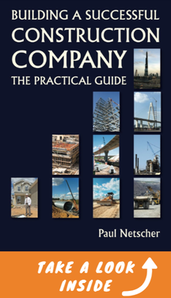 This article is an extract from the book 'Building a Successful Construction Company: The Practical Guide.' © 2021 This article is not to be reproduced for commercial purposes without written permission from the author. Do you want to learn how to manage construction projects successfullyPaul Netscher has written several easy to read books for owners, contractors, construction managers, construction supervisors and foremen. They cover all aspects of construction management and are filled with tips and insights.
Visit to read more. The books are available in paper and ebook from most online stores including Amazon. |
Archives
June 2024
Note: We welcome genuine comments, especially comments that add additional information to the subject matter in the article. We however reserve the right to remove inappropriate comments, which includes comments that have nothing to do with the subject, comments that include inappropriate language, and comments that are an advertisement for a product or company, or which include an advertising link. Comments must be in English. We will not enter into discussion on why a particular comment was removed.
CategoriesCopyright 2016 - The attached articles cannot be reproduced for commercial purposes without the consent of the author.
The opinions expressed in the attached articles are those of the writer. It should be noted that projects are varied and different laws and restrictions apply which depend on the location of the contractor and the project. It's important that the reader uses the supplied information taking cognisance of their particular circumstances. The writer assumes no responsibility or liability for any loss of any kind arising from the reader using the information or advice contained herein. "I have what I consider some of the best books on construction management."
Books are available from: Amazon.com Amazon.co.uk takealot.com kalahari.com Amazon.in Amazon.de Amazon.fr Amazon.it Amazon.com.au Powell's Fishpond uread bokus Amazon.ca Amazon.es Other retail stores Available in paperback or on Kindle "28 YEARS OF CONSTRUCTION PROJECT MANAGEMENT EXPERIENCE, DEVELOPING SUCCESSFUL CONSTRUCTION PROJECT MANAGERS AND BUILDING SUCCESSFUL CONSTRUCTION COMPANIES"
|



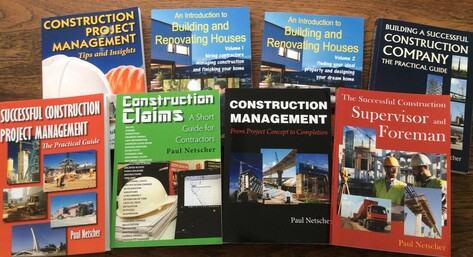
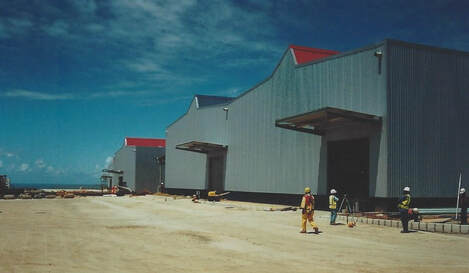
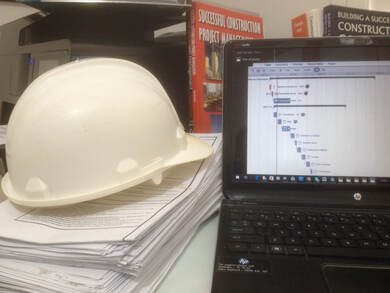
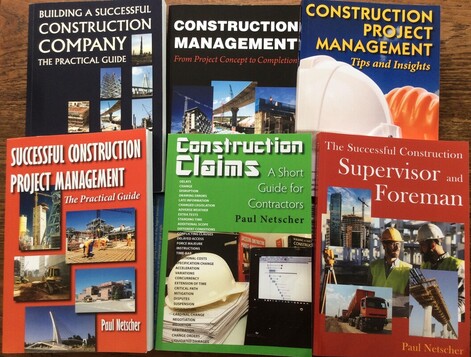



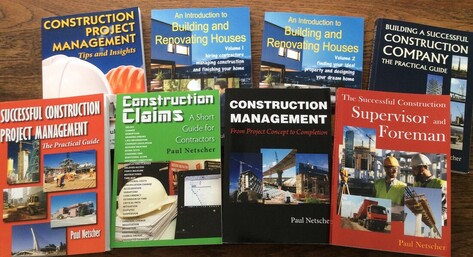
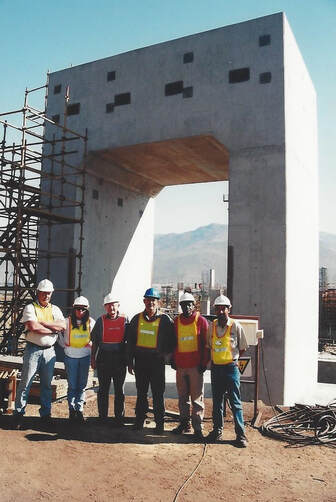

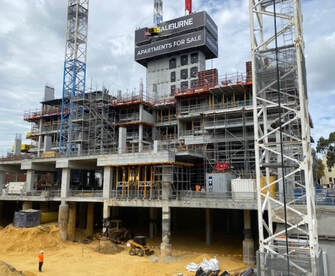

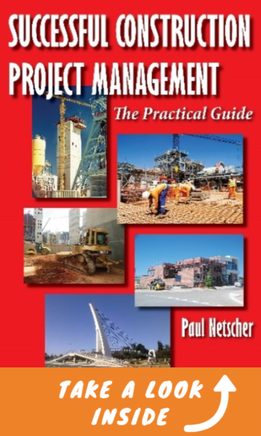


 RSS Feed
RSS Feed




